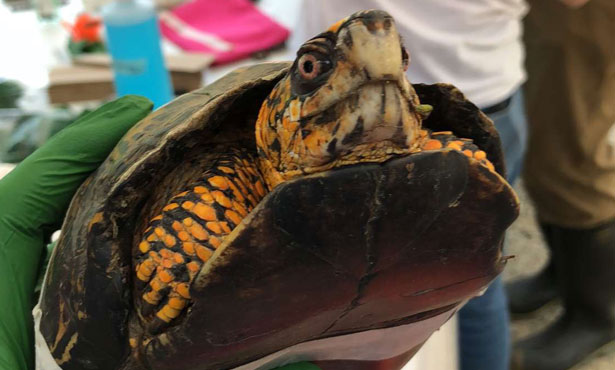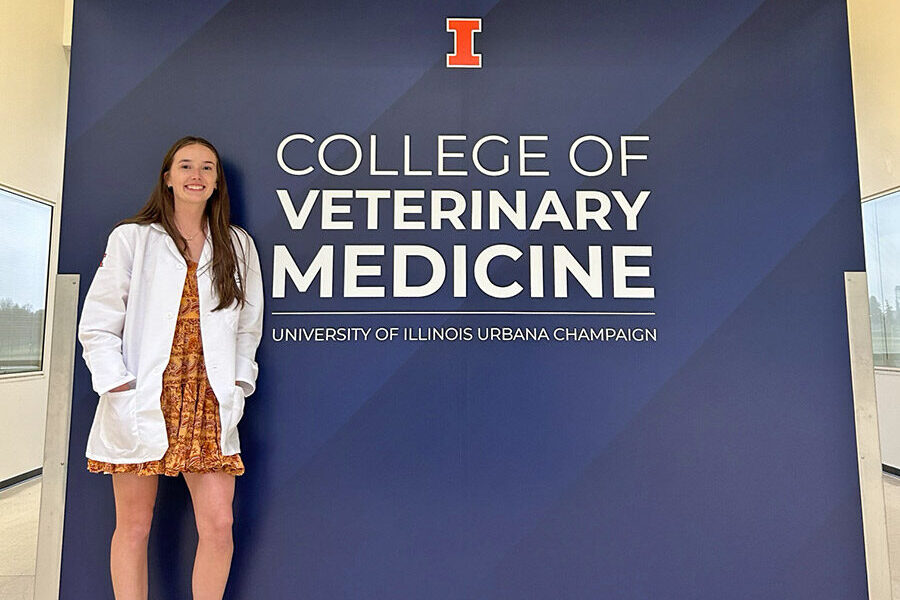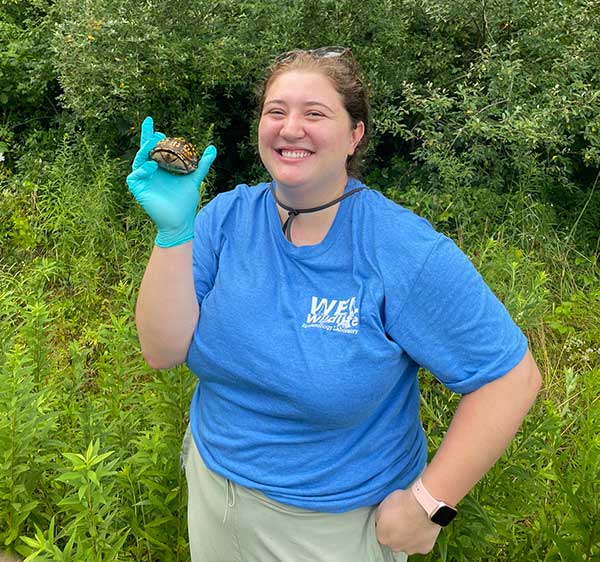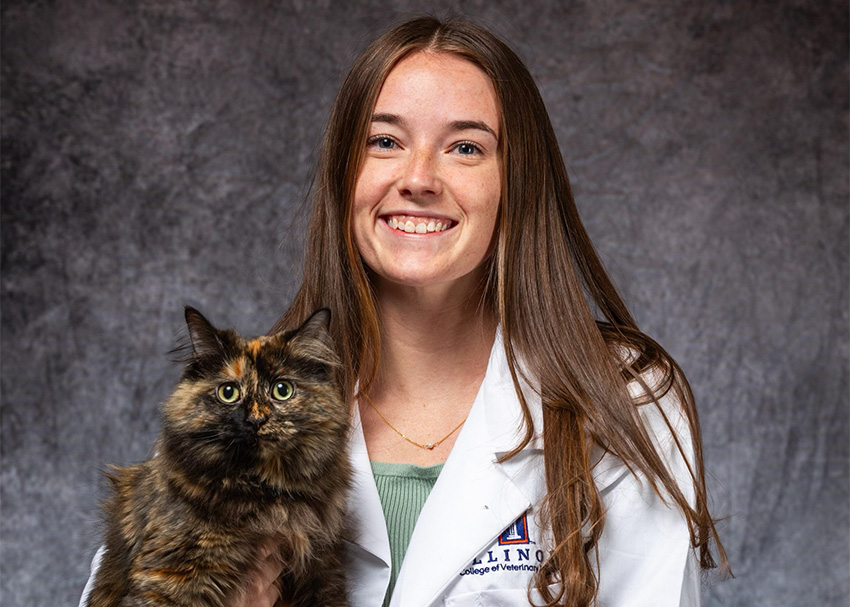Last week I participated in an eastern box turtle health assessment project through the Wildlife Epidemiology Lab. The project is the largest terrestrial chelonian health assessment in the world and is led by Dr. Matt Allender.
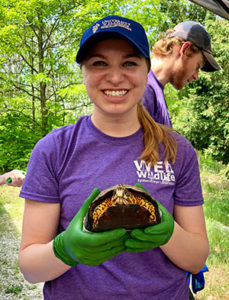
Each summer, Dr. Allender asks for veterinary student volunteers to participate in the health assessments, commonly referred to as “Turtle Team.” “Turtle Team” takes place throughout the summer in Vermilion County and Marion County. Volunteers are scheduled either in the field in the morning or in the lab in the evening to give each student a comprehensive experience. A unique aspect of this project is the turtle dogs. The turtle dogs are Boykin Spaniels, handled by John Rucker, and they are trained to locate eastern box turtles and bring them back to us so that we can collect data on the turtles. (Watch a WCIA-TV video segment about the project!)
I participated in the May Turtle Team in Vermilion County. These sites included Collison, Kennekuk, Forest Glen, and Kickapoo State Park. My favorite site of the week was Kennekuk because it was the field day that found the most turtles and, therefore, gave us the most data and the most hands-on experience. For the fieldwork days, we would meet at the field sites, set up the tents, and the venipuncture team would stay at the sites and label blood tubes while the rest of the volunteers hiked with the turtle dogs.
The turtle dogs would search for turtles and once they found one, they would retrieve it and bring it back to us. We would then label the finding site with flagging tape. Other location data, such as weather and GPS coordinates, were recorded manually and digitally on an iPad. The turtles were assigned a letter and a number combination with masking tap and were placed in labeled pencil bags in their respective backpacks. After around three hours of hiking, we would then return to the fieldwork site and begin working up the turtles.
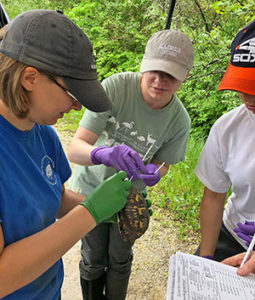
The work-up included weighing the turtles, collecting blood samples, oral swabs, cloacal swabs, orocloacal swabs, temperature, performing Doppler to assess heart rate, and collecting demographic data. Each turtle is notched with a unique ID before being released. For the release, we would do an afternoon hike to the locations where the turtles were found and release the turtles there. The proper release location is critical to avoid the turtles having to cross a busy road to return to their original location. After the turtles are released, the lab volunteers are called in to process the samples. Sample processing included running routine tests, such as CBCs, chems, and PCR.
This year marked the second year of my involvement with the eastern box turtle health assessment project. I am proud to be a part of a project that is paving the way for healthy conservation (the turtles indicate whether the natural resources are healthy, which links to human health) and saving the world one box turtle at a time.

